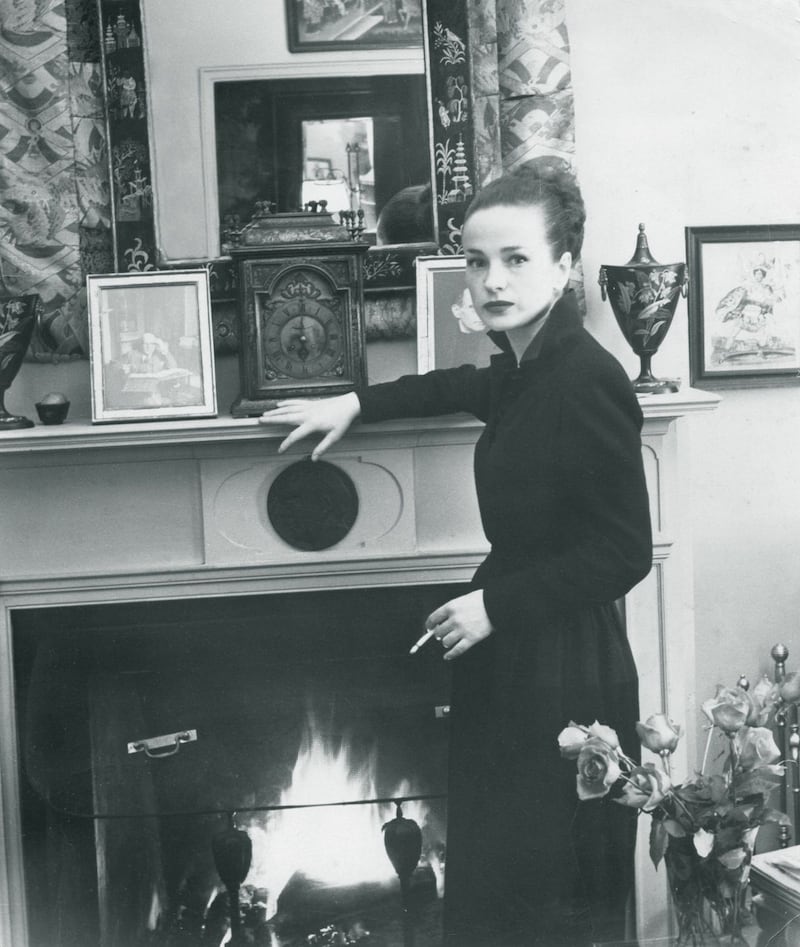Thursday, January 1st, 1998
The first time Maeve Brennan appeared in The Irish Times she was front page news. The then 25-year-old Dublin woman was pictured, beaming, in June 1942, holding a pile of books, with the caption, “Miss Maeve Brennan, daughter of Mr Robert Brennan, Ireland’s Minister to the United States, and Mrs Brennan, Librarian at the National Catholic School for Social Service in Washington, D.C.”
This was before Brennan became a celebrated writer and stalwart of the social scene in New York. At the height of her writing career, observing Manhattan life in her Long-Winded Lady column in the New Yorker, and as an author of short stories, she achieved acclaim that didn’t travel across the Atlantic to her home country of Ireland. Her appearances in The Irish Times were rare.
In 1976, Brendan Gill wrote an extensive piece for the newspaper about the New Yorker and in mentioning “the most celebrated” Irish writers who wrote for the magazine Gill included Mary Lavin, Edna O’Brien and Maeve Brennan. She was mentioned again in a short news brief in January 1987 about the retirement of William Shawn, then editor of the New Yorker.
As Brennan’s drinking and state of mind worsened in the 1970s, she became homeless, sleeping in the women’s toilets at the New Yorker office, and then effectively vanished from view, spending the 1980s in New York moving from one dodgy 42nd Street hotel to the next.
She died of a heart attack in 1993, in a nursing home.
Remarkably, it wasn’t until 1998 that her death was mentioned in the newspaper, when Fintan O’Toole wrote a piece headlined “No fairy tale ending to a writer’s life in New York”.


“For a smart, charming young woman like Maeve Brennan, able to waltz her way into the pages of Harper’s Bazaar and the New Yorker, the choice between Ireland and exile cannot have required much agonising,” wrote O’Toole. “Even for the daughters of the revolution, Ireland was no country for young women . . .
“In spite of her dazzling success, it is clear that she was at home in neither Ireland nor America. For all her potential greatness as a fiction writer, she could write of nothing but Ireland, a country in which she had no readership. She could be neither an Irish writer nor an American one. Is it so surprising that her wonderful imagination was finally derailed by psychosis?”


By then, The Springs of Affection, a collection of her short stories had been published in Ireland. “Maeve Brennan is an Irish writer poised on the edge of cultdom,” wrote Eileen Battersby in the newspaper on New Year’s Day, 1999. “The fact that she has become Irish literature’s best-kept secret is disturbing – everyone should be reading her.”
The Irish Times continued to take up the mantle of publicising her work, publishing one of her stories, The Eldest Child, on the front page of the Weekend section on May 1st, 1999. That Christmas, Catherine Byrne read the famous Brennan story Christmas Eve on RTÉ Radio 1. Brennan’s writing continues to experience a slow recalling, from her rediscovered short story The Visitor, to The Eldest Child, published in The Long Gaze Back anthology.
O’Toole’s article in 1998 ended with a remarkable anecdote, rooted in Brennan’s pitch-black humour. “After her death, William Maxwell [fiction editor at the New Yorker for 40 years] came across a mock-reply she had written to a reader of the New Yorker who had written to the editors asking them to print more of her stories,” wrote O’Toole.
“Signed in his name, the letter announced her death: ‘She shot herself in the back with the aid of a small hand mirror at the foot of the main altar in St Patrick’s Cathedral.’ The celebrated Frank O’Connor, she wrote, happened to be in the confession box, pretending to be a priest in order to gather material for his stories. He heard the shot and ‘fearing a scandal, ran up to the front of the church and slipped her in the poor box . . . It took six strong parish priests to get her out of the box . . . We will never know why she did what she did, but we think it was because she was drunk and heartsick. She was a very fine person, a very real person, two feet, hands, everything. But it’s too late to do much about that now.’ ”











